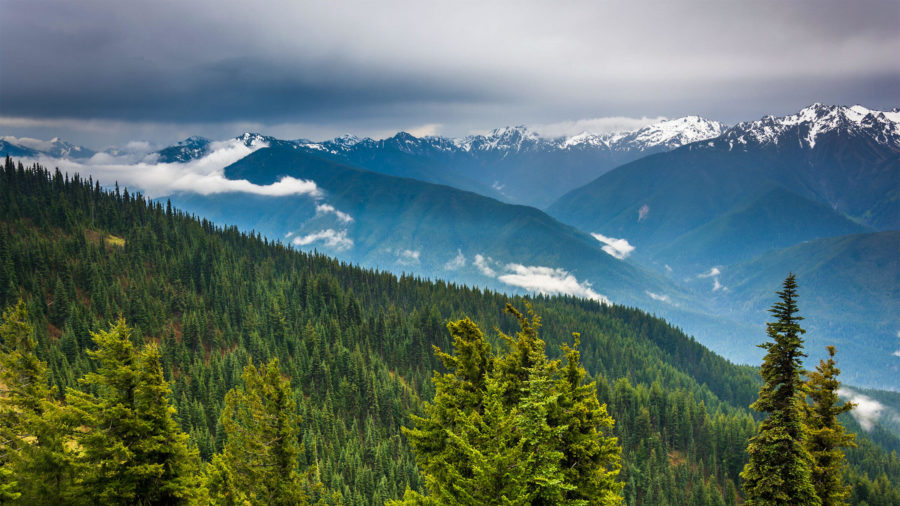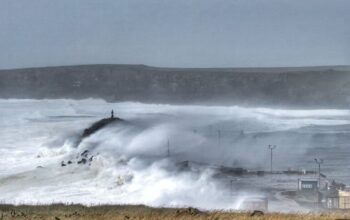Duane Miles was reported missing on Oct. 23 after not returning from a day hike in Olympic National Park.

The search continues for a 78-year-old man from Beaver, Washington who was reported missing after going for a day trip to Olympic National Park.
According to the National Park Service (NPS), Duane Miles was last seen on Oct. 19 in Amanda Park, Washington, as he was traveling to the Graves Creek area of Olympic National Park. He intended to have a day hike in the area on Oct. 20.
The NPS said Miles is a very skilled hiker who often hikes off-trail alone to look for shed elk antlers.
A NPS spokesperson said Thursday that rescue teams plan to continue searching for Miles through the weekend, and “then reassess based on the search status at that time.”
Anyone with information or if you were in the area of Graves Creek and East Fork of Quinault between Oct. 18-20 is asked to call the NPS ISB tip line at 888-653-0009 Read more from King5
10 Facts About Olympic National Park, One of the Most Diverse Landscapes in the Country
Spanning almost a million miles across the Olympic Peninsula in northwestern Washington state, Olympic National Park’s alpine mountains, temperate rainforests, and stunning coastline protect countless plant and animal species while providing important recreational sites for visitors.
President Theodore Roosevelt originally designated this impressive landscape as Mount Olympus National Monument on March 2, 1909, and it was then redesignated a national park by President Franklin Roosevelt on June 29, 1938.
Learn what makes this unique national park truly special.
95% of Olympic National Park Is a Federally Designated Wilderness
One of the largest wilderness areas in the contiguous United States, Olympic National Park devotes 95% of its landscape, or 876,669 acres, to protecting the country’s wildlands. This is thanks to the Wilderness Act of 1964, which established the National Wilderness Preservation System to protect parts of the country that have remained undeveloped and uninhabited by humans.
The wilderness at Olympic National Park was initially designated in 1988 and then redesignated in 2016 as the “Daniel J. Evans Wilderness” after the former governor of Washington.
There Are 60 Active Glaciers Inside of the Park
:max_bytes(150000):strip_icc():format(webp)/GettyImages-520953233-3bc9614de54e4137be81fb2ef925ab21.jpg)
Olympic’s eclectic ecosystems culminate in the alpine meadows and glacial mountains that are protected by old-growth forest—one of the Pacific Northwest’s best examples of intact and protected temperate rainforests.
The mountains contain at least 60 known active glaciers in an area believed to be the lowest latitude where glaciers begin at an elevation under 6,500 feet and exist below 3,300 feet on Earth.
13 Animal Species Are Listed as Threatened or Endangered Under the ESA
:max_bytes(150000):strip_icc():format(webp)/GettyImages-141865619-6c4de3c2304a40c1bcd4c0dc75fd4135.jpg)
With such a diverse landscape, it’s no wonder that Olympic National Park is teeming with wildlife—many of which are federally threatened or endangered under the Endangered Species Act.
Gray wolves may have been wiped out in the 1920s (although the park is considered to have a high potential for wolf reintroduction projects in the future), but endangered species like the short-tailed albatross are still present inside the park. Other threatened animals include the Northern spotted owl, the Ozette Lake sockeye salmon, and the Puget Sound steelhead.
Olympic National Park Contains Over 650 Archaeological Sites
The vast amount of archaeological sites inside Olympic National Park help document the area’s 10,000-year history of human occupation. The early Olympic Peninsula was made up of eight contemporary groups, including the Makah, Quileute, Hoh, Quinault, Skokomish, Port Gamble S’Klallam, Jamestown S’Klallam, and Lower Elwha Klallam.
In 1890, famed naturalist John Muir led the first documented exploration of the peninsula, subsequently proposing the creation of a national park there.
The Park Is Famous for Its Tidepools
:max_bytes(150000):strip_icc():format(webp)/GettyImages-558005843-3e6a324533794d5d89c1b6a3d59a0231.jpg)
It is hard to imagine that a park known for its towering glacial peaks would also be famous for its beaches and tidepools—but Olympic is no ordinary park.
Rangers offer education programs at some of the more popular tidepools to teach visitors about the wealth of aquatic life inside. Whether it’s the common periwinkle sea snail, the purple-shelled Dungeness crab, or the vibrant ochre sea stars, there’s plenty to see.
Olympic Is Also a Popular Spot for Whale Watching
Among Olympic’s endangered species you’ll find finback, blue, sei, and sperm whales.
The Olympic Coast National Marine Sanctuary shares Olympic National Park’s 65 miles of coastline and works closely with non-profit organization The Whale Trail, based in Seattle. The conservation project is organized by a core team of partners and regional planning teams such as NOAA Fisheries, National Marine Sanctuaries, and the Washington Department of Fish and Wildlife.
It’s Home to One of the Last Temperate Rainforests Left in the United States
:max_bytes(150000):strip_icc():format(webp)/GettyImages-sb10064698v-001-61ec9d3175da49cfb3c598056fe1ea1e.jpg)
The Hoh Rain Forest is named for the river that runs through the park from Mount Olympus to the Pacific Coast. Topped with a lush canopy of coniferous and deciduous tree species ranging from Sitka spruce and red cedar to big leaf maple and douglas fir, the temperate rainforest sees a majority of the 140 inches of rain the park receives each year.
Under this green canopy, dense vegetation made up of mosses and ferns provides habitat for large mammals like elk, black bears, and even bobcats and mountain lions.
Visitors Can ‘Adopt a Fish’ at the Park
The park’s “Adopt-A-Fish” radio-tracking program started in 2014, the same year that the park finished the largest dam removal project in United States history. This project involved removing the Elwha and Glines Canyon dams that had blocked salmon migrations into Olympic National Park for over a century.
Adopt-A-Fish is aimed at tracking the movements of fish in the Elwha watershed and monitoring the success of the dam removal while educating the public on salmon migrations.
A Species of Housecat-Sized Rodent Is Endemic to Olympic
:max_bytes(150000):strip_icc():format(webp)/GettyImages-139524977-00833c913f0f47edbd05b64f5323a8a3.jpg)
Known as the Olympic marmot, these playful mammals are found nowhere else on Earth outside of the national park. Adults can weigh over 15 pounds when they enter hibernation in the early fall and mainly occupy mountain meadows above 4,000 feet. Read more from Tree Hugger





